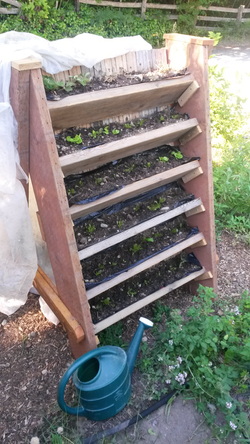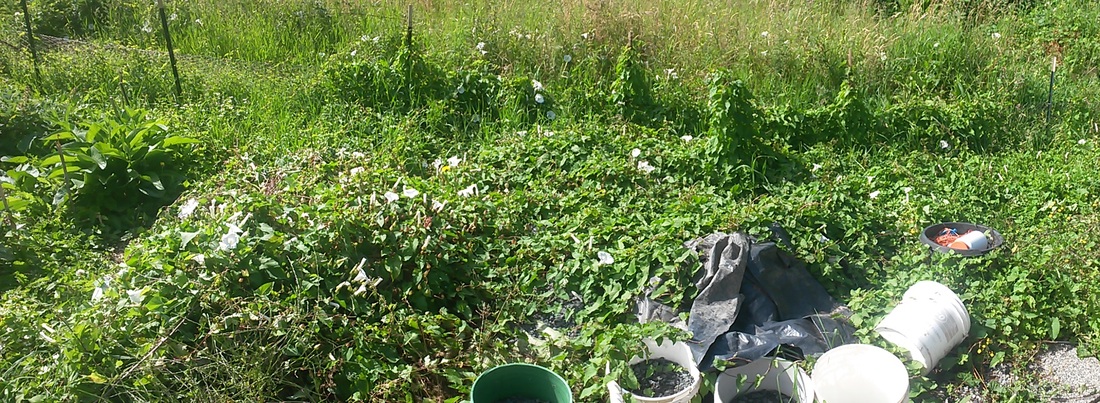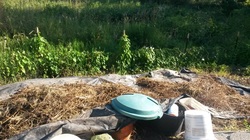
I had been curious about herb spirals, a technique in which a mound is formed with a terrace-like ramp spiraling from the base to the top. The idea is to create some diversity of sunlight and soil moisture conditions for a variety of herbs in a compact system. One of the drawbacks of this technique is the amount of soil (a precious commodity for the completion of the hugelkultur beds) needed to construct the mound. A worth-while herb spiral may also take up more space than is available in the garden, where many herbs are growing fine as it is.
When Patricia suggested I prepare a section of the southwest quadrant for planting blueberries it sounded like a larger endeavor that would create a more utilized and enjoyed outcome than an herb spiral. The previously untouched bed lay between the cob bench and the fence of the garden’s south edge. It was uneven, overgrown, and a part of the cob-bench-restoration construction zone.

I weeded the area between cycles of checking irrigation, and Patricia showed me how to use bindweed—yes bindweed—as mulch. To me the idea was at first like slipping a noose around the neck of each little plant; I wasn’t convinced it was a good idea until she showed me some beds where she had already done it! We unfolded a tarp over the weeded plot to sit for a week and smother the roots of the unwanted weeds. I spread the “harvested” bindweed on top to begin drying as an extra precaution before using.


 RSS Feed
RSS Feed